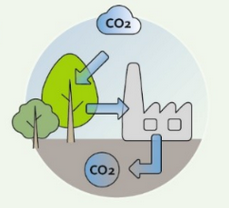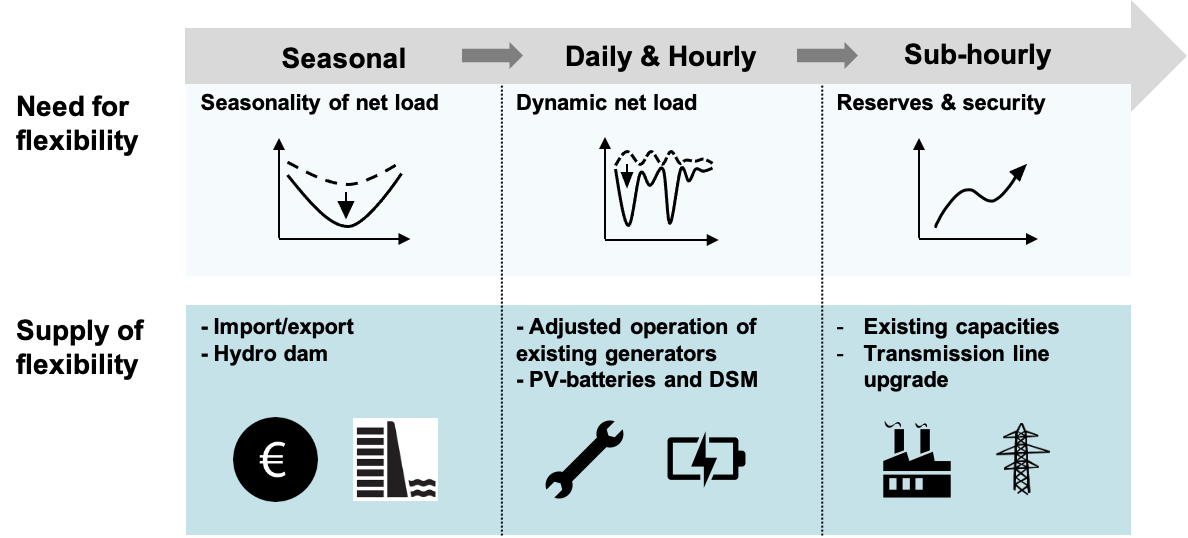Projects
Applications of the Nexus-e platform

New study on the potential role of hydrogen in the future Swiss electricity system.
Hydrogen and e-fuels and their potential role in future energy systems are hotly debated topics. Using The modelling platform Nexus-e, a team of researchers at the Energy Science Center at ETH has looked at the potential role of imported or domestic hydrogen or e-methane for the Swiss electricity system.

New scenarios based on cooperation with Energy Infrastructure Partners
Energy Infrastructure Partners and the Energy Science Center at ETH Zurich have signed a research collaboration. In this collaboration, EIP and ESC under the lead of Dr. Marius Schwarz have developed scenarios for the future of Switzerland’s electricity system and tested several shock scenarios. Results show that reducing grid transfer capacities to 30 percent in 2050 as an unforeseen shock or drastically reducing the availability of nuclear power plants in France as the same type of shock does not result in supply issues. Only the scenario forcing Switzerland to keep a balanced winter trade balance results in supply issues.

Swiss Electricity Supply after the “Mantelerlass” – Quo vadis? A perspective on Nuclear Power
In this study, we assess the role of the existing and new nuclear power plants for the Swiss electricity system. We use the Nexus-e modeling platform to develop three scenarios with different operating time of existing and construction of new nuclear power plants.

Assessing the Feasibility of Scenarios for the Swiss Electricity System
The company Helion, the Swiss industry association Swissolar and National Councilor Jürg Grossen have each developed roadmaps for the Swiss electricity system up to 2050. These scenarios are characterized by a rapid and strong expansion of photovoltaics (PV) to compensate for the phase-out of nuclear energy and to cover a large part of the increasing electricity demand. In this study, we investigate the feasibility of these Roadmaps and compare them with the “Business as usual” (“Weiter Wie Bisher”, WWB) scenario of the Energy Perspectives 2050+.

Vehicle-to-grid in Switzerland
The electrification of the transport sector will have a substantial impact on the Swiss electricity system. Vehicle-to-Grid (V2G) – the bidirectional interaction between electric vehicles and the grid – is one way of leveraging the battery capacity to provide flexibility for the electricity system. In this study, we make a first estimate of the potential impact of V2G on the Swiss electricity system. We hereby assume that V2G is used for balancing supply and demand on a system level.

Alternatives to the prevailing PV policies in Switzerland
Electricity generated from rooftop photovoltaics systems have the largest renewable potential in Switzerland and are expected to contribute substantially to the future Swiss electricity mix. However, so far, these systems are behind their expectations, which is why an update of PV policies is discussed. In this project, we investigate an alternative to the prevailing support scheme. What we call the “customer-oriented feed-in tariff” remunerates solar electricity injected to the grid with a percentage of the retail electricity price, the price electricity customers are paying for electricity consumption.

SWEET EDGE
The Swiss Federal Office of Energy (SFOE) launched the funding programme SWEET in 2020 to boost innovative approaches towards implementing Switzerland’s Energy Strategy 2050. Nexus-s will on of the three models leveraged in SWEET EDGE – Enabling Decentralized renewable GEneration in the Swiss cities, midlands, and the Alps – to develop scenarios for the Swiss energy transition.

SWEET PATHFNDR: PATHways to an Efficient Future Energy System through Flexibility aND SectoR Coupling
The Swiss Federal Office of Energy (SFOE) launched the funding programme SWEET in 2020 to boost innovative approaches towards implementing Switzerland’s Energy Strategy 2050. Nexus-e is the central tool for one of the four selected consortia “PATHFNDR”. PATHFNDR focuses on improving renewable energy system efficiency through flexibility and sector coupling. As the central tool for the consortium, Nexus-e will provide the scenarios, considering technical, economic, and social constraints for the national scale and regional scale. In this project, Nexus-e will be extended to represent the entire Swiss energy system.

The role of bio-energy with carbon capture and storage to deliver net-zero emissions in Switzerland
Negative emission technologies will likely play a critical role in reaching the goal of net-zero carbon emissions. In this project, we will analyze the technical and environmental feasibility of carbon removal with Bio-Energy with Carbon Capture and Storage (BECCS), based on the availability of biomass, bioenergy potential, and of the infrastructure for CO2 capture and sequestration.

The role of flexibility providers in shaping the future energy system
As part of the development of the Nexus-e platform, this first study sponsored by the Swiss Federal Office of Energy implements the Nexus-e core modules to research the role of flexibility providers in shaping the future Swiss electricity system.

